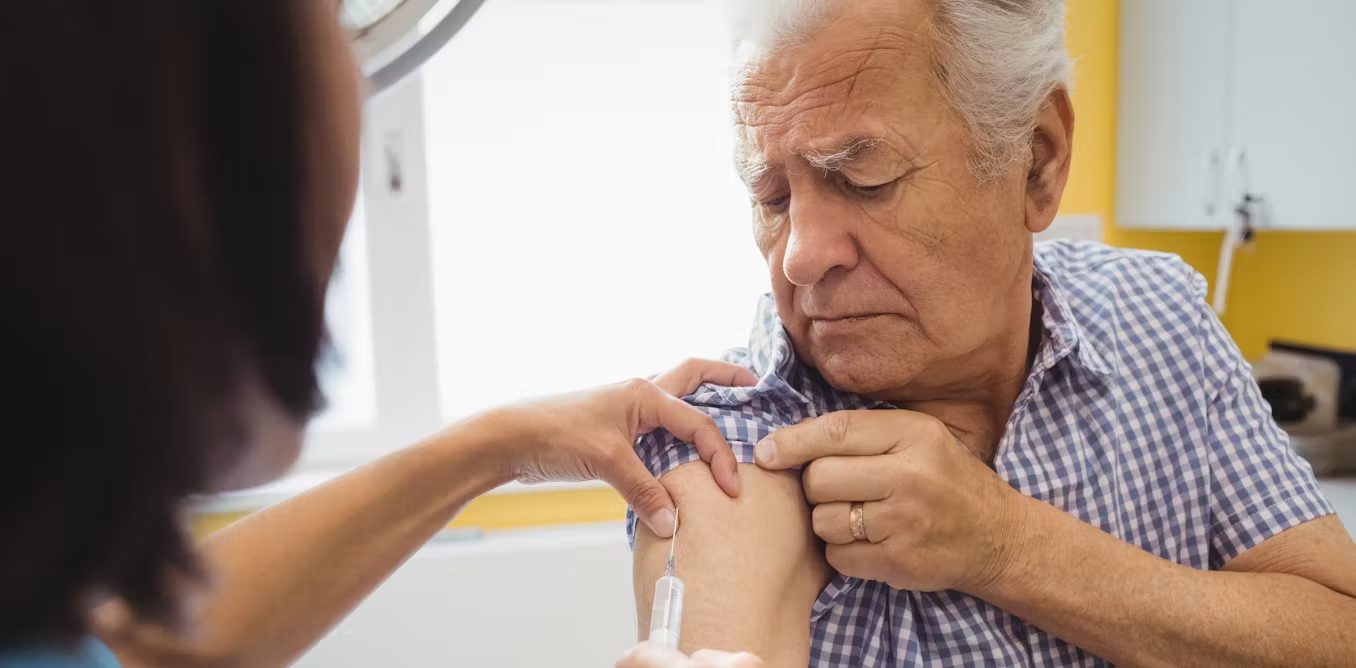Is P.O.T.S. The Differential?
June 14, 2024
Postural Orthostatic Tachycardia Syndrome
Imagine standing up and feeling as if you’ve just run a marathon – heart pounding, head spinning, and limbs trembling. This is the reality for many individuals with Postural Orthostatic Tachycardia Syndrome (POTS), a complex and often misunderstood disorder of the autonomic nervous system. The journey from symptoms to diagnosis can be a daunting odyssey, riddled with misinterpretations and misdiagnoses, yet it sheds light on the intricacies of the human body and the resilience of the human spirit.
Postural Orthostatic Tachycardia Syndrome is not a mere anomaly; it’s a syndrome that challenges conventional medical understanding. Characterised by a rapid increase in heart rate upon standing without a corresponding drop in blood pressure, POTS manifests in a myriad of symptoms ranging from fatigue and exercise intolerance to gastrointestinal distress. Despite its prevalence, POTS remains enigmatic, its pathophysiology shrouded in complexity.
The Diagnostic Conundrum
One of the foremost challenges in dealing with POTS lies in its diagnosis. The clinical criteria, though established, often fail to capture the heterogeneous nature of the syndrome. Misdiagnosis is rampant, with patients enduring a protracted quest for answers.
The current diagnostic protocol for POTS mandates an observed increase in heart rate of at least 30 beats per minute (bpm) or surpassing 120 bpm within the initial 10 minutes of assuming an upright posture, all while excluding orthostatic hypotension. This criteria is further refined for paediatric and adolescent cases, where a benchmark of 40 bpm or more is often applied. While the Tilt Table Test serves as a primary diagnostic tool, in its absence, clinicians resort to bedside assessments of heart rate and blood pressure at specified intervals during supine and standing positions, known as the Active Stand Test. However, it’s notable that this method may overlook certain instances of POTS, necessitating caution in its exclusive reliance when symptoms strongly indicate POTS. To comprehensively evaluate the autonomic nervous system in POTS patients, clinicians may employ additional assessments such as Quantitative Sudomotor Axon Reflex Test (QSART), Thermoregulatory Sweat Test (TST), skin biopsies targeting small nerve fibres, assessments of gastric motility, among others.
Interestingly, in December of 2013, Dysautonomia International conducted a survey of over 700 POTS patients to better understand the experiences that POTS patients have as they interact with physicians. They found the following key results:
– The average diagnostic delay for a POTS patient is 5 years and 11 months.
– Only 25% of patients are diagnosed within the first year of symptoms.
– 50% of patients travelled more than 100 miles from home to receive POTS related medical care.
– Prior to being diagnosed with POTS, 59% of patients were told by a doctor that their symptoms were “all in your head.”
– Prior to being diagnosed with POTS, 69% of POTS patients were diagnosed with an anxiety disorder. However, peer-reviewed research demonstrates that POTS patients are no more likely to be anxious than the general public.
– 27% of patients visited more than 10 doctors for their symptoms before finally being diagnosed with POTS.
– 34% of survey participants were teenagers when they first developed symptoms of POTS.
These results emphasise the difficulties POTS patients encounter in obtaining and accurate diagnosis and receiving adequate medical care once they are diagnosed with POTS. It also highlights the gaps in industry understanding and can only paint a lonely picture of the patient’s well being during this time.
A Dark Road to Diagnosis
While the focus of diagnostic criteria centres on the atypical heart rate escalation upon standing, POTS manifests with a spectrum of symptoms far beyond mere heart rate fluctuations. It’s common for POTS individuals to experience orthostatic blood pressure drops, though some may encounter no change or even an elevation in blood pressure upon standing. This is often coupled with hypovolemia (low blood volume) and heightened plasma norepinephrine levels, indicating increased sympathetic nervous system activity. Additionally, around 50% of POTS patients exhibit small fibre neuropathy impacting sudomotor nerves, contributing to symptoms like fatigue, headaches, lightheadedness, heart palpitations, exercise intolerance, nausea, reduced concentration, tremors, fainting spells, extremity discomfort, chest pain, and breathlessness. Upon standing, some may notice a reddish-purple hue in their legs due to blood pooling or circulatory issues, which dissipates upon reclining.
Regarding quality of life, the severity of POTS symptoms varies widely among patients. While some manage to maintain regular daily activities, others face significant limitations in tasks like bathing, household chores, eating, remaining upright, walking, or standing. Experts liken the functional impairment in severe POTS cases to that seen in chronic obstructive pulmonary disease (COPD) or congestive heart failure. Approximately a quarter of POTS patients are unable to work due to disability. Studies indicate that the quality of life for POTS patients is comparable to that of individuals undergoing dialysis for kidney failure.
Understanding a Better Future
In conclusion, it’s imperative to recognise the immense challenges faced by patients throughout their diagnostic journey. The intricate nature of POTS often leads to extended periods of medical consultations and numerous tests before a conclusive diagnosis is reached. This prolonged process can take a toll on patients, both physically and emotionally. It’s no wonder that many individuals with POTS experience co-occurring symptoms of anxiety, stress, and depression. The uncertainty, frustration, and constant search for answers can weigh heavily on their mental well-being, and should be considered part and parcel of their condition manifestation.
Furthermore, POTS is not just a fleeting condition but rather an enduring and fatiguing one – especially without formal diagnosis. Its impact on individuals varies widely, with some managing to cope with relatively mild symptoms while others face severe limitations in their daily lives. The debilitating nature of POTS can significantly disrupt one’s way of life, affecting their ability to work, socialise, and engage in activities they once enjoyed. Moreover, the lack of clarity and understanding surrounding POTS can further compound the challenges faced by patients, making it essential for healthcare professionals to approach each case with patience, empathy, and thorough consideration.
As we advocate for improved care and support for POTS patients, it’s crucial to extend this empathy to all individuals suffering from chronic illnesses. The emotional fatigue of enduring ongoing symptoms and potential misdiagnoses is a shared experience among many in the chronic illness community. Healthcare providers must recognise the profound impact of these challenges on patients’ mental health and well-being, offering not just medical expertise but also compassionate support and understanding.
Looking ahead, it’s clear that identifying and addressing gaps in our diagnostic measures is vital for better managing and diagnosing POTS. Enhanced awareness, education, and research efforts are necessary to improve the early detection, treatment options, and overall quality of life for individuals living with POTS. By fostering a collaborative approach between patients, healthcare professionals, researchers, and advocacy groups, we can work towards a future where POTS is more effectively managed, diagnosed, and understood.
Vernino S, Bourne KM, Stiles LE, Grubb BP, Fedorowski A, Stewart JM, Arnold AC, Pace LA, Axelsson J, Boris JR, Moak JP, Goodman BP, Chémali KR, Chung TH, Goldstein DS, Diedrich A, Miglis MG, Cortez MM, Miller AJ, Freeman R, Biaggioni I, Rowe PC, Sheldon RS, Shibao CA, Systrom DM, Cook GA, Doherty TA, Abdallah HI, Darbari A, Raj SR. Postural orthostatic tachycardia syndrome (POTS): State of the science and clinical care from a 2019 National Institutes of Health Expert Consensus Meeting – Part 1. Auton Neurosci. 2021 Nov;235:102828. doi: 10.1016/j.autneu.2021.102828. Epub 2021 Jun 5. PMID: 34144933; PMCID: PMC8455420.
Raj V, Haman KL, Raj SR, Byrne D, Blakely RD, Biaggioni I, Robertson D, Shelton RC. Psychiatric profile and attention deficits in postural tachycardia syndrome. J Neurol Neurosurg Psychiatry. 2009. 80(3).












